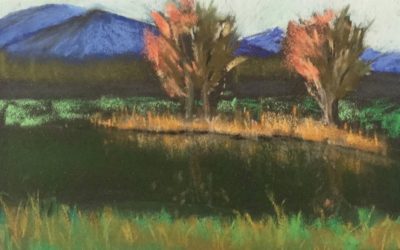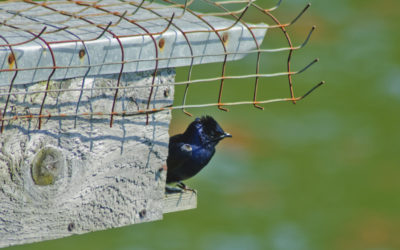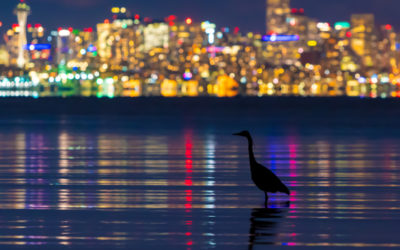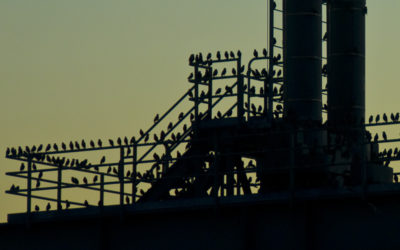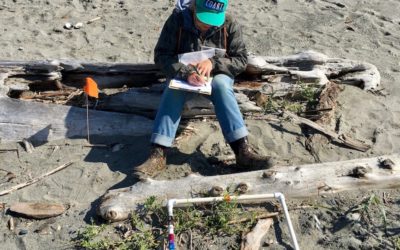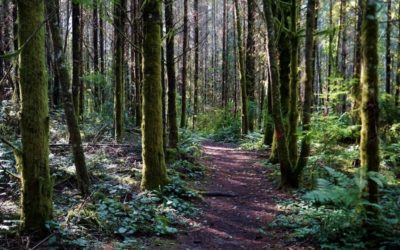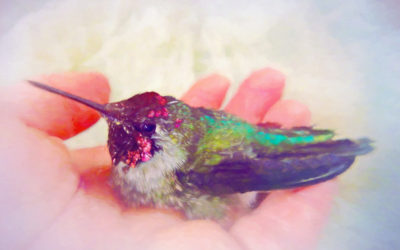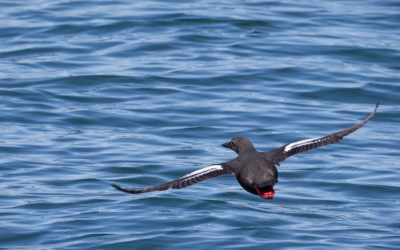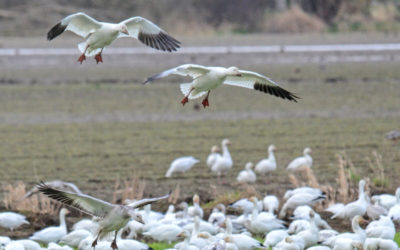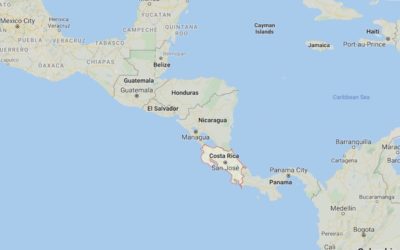BARN SWALLOWS:
Nature’s Pest Control
by Adelia Ritchie, Winter 2019
Photos by John F. Williams except where noted
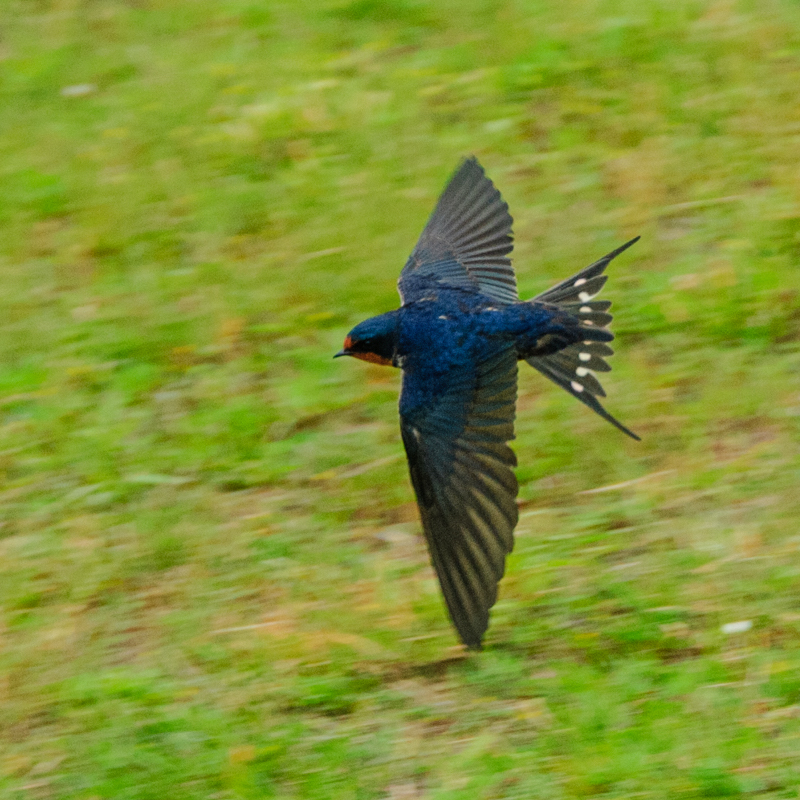
BARN SWALLOWS:
Nature’s Pest Control
by Adelia Ritchie, Winter 2019
Photos by John F. Williams except where noted
Close cousin of the purple martin is our hard-working summertime visitor, the barn swallow. If you live on or near a pond or lake almost anywhere in the continental United States and southern Canada, you may have a love/hate relationship with these remarkable birds. Barn swallows, with their rusty-orange breasts and deep indigo wings and back, can be distinguished from purple martins when observed in flight, the difference being the long forked tail of the barn swallow.
 See the Purple Martins article for more about them.
See the Purple Martins article for more about them.
Large flocks of barn swallows arrive here in early spring, having wintered in Central and South America, to breed and build mud nests in stables, open sheds, and under the eaves of houses, often to the consternation of human residents. So when the swallows arrive in mid- to late-April, with their aerial acrobatics and happy chirps, we know spring has arrived and it’s time for the crops to be planted.

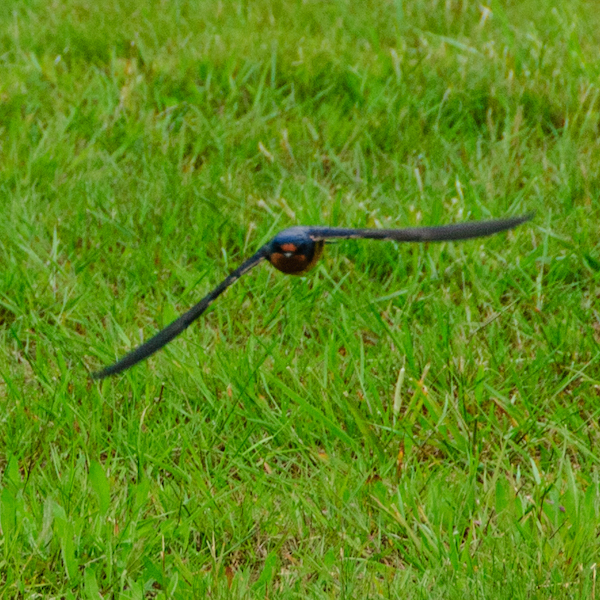
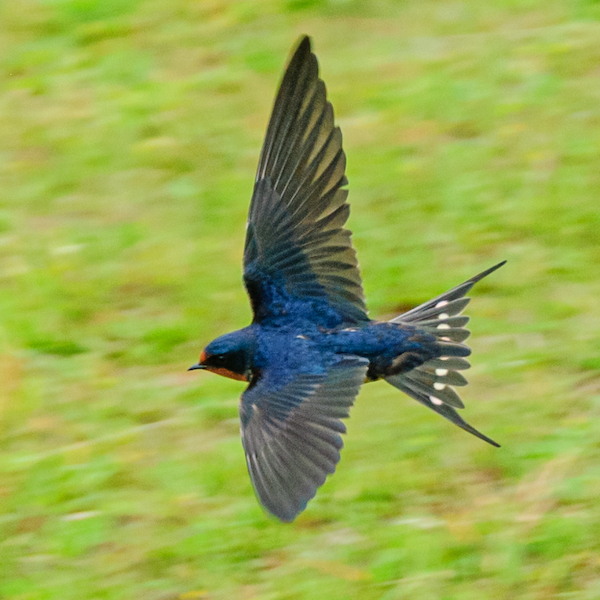
Barn swallows are extremely agile flyers, each one scooping up mosquitoes, flies, gnats and other flying insects at a rate of 60 bugs per hour! They feed from dawn to dusk, devouring up to 850 flying insects each day. Close to our duck pond is the horse barn that hosts dozens of swallow families every year, and because of these busy birds we can sit outdoors without ever being bitten by a mosquito. That’s the good news.
The bad news is that swallows are extremely messy, and in addition to the stables, every year they try to nest under the eaves of our house. Once nestlings have started to hatch, we don’t have the heart to destroy them, regardless of the gallons of messy output we’ll have to scrape off the sides of the house and the driveway. Furthermore, these birds are now federally protected, and any occupied nest cannot be removed without a permit from the US Fish and Wildlife Service. But over time we have installed nail boards under all the eaves of our house to deter them from ever starting to build a nest there in the first place—a win-win solution.
Sadly, with habitat loss and the widespread use of pesticides, the barn swallow populations have decreased about 90 percent across North America over the last 40 years.

Image by Jochen Schaft from Pixabay
I love these little birds, and over a summer I feel they begin to know me and to realize I’m no danger to them. On my daily walks around the property, a swallow or two will swoop down and literally fly circles around me, just a few inches above the ground. It feels like a friendly hello and a sign of gratitude for allowing them to share the stables for safe nesting and a rich feeding ground for raising their families.

FIND OUT MORE
Another interesting and informative article about barn swallows is: The Barn Swallow – A Symbol Of Spring. This article also features a short video showing some of the swallow behavior.
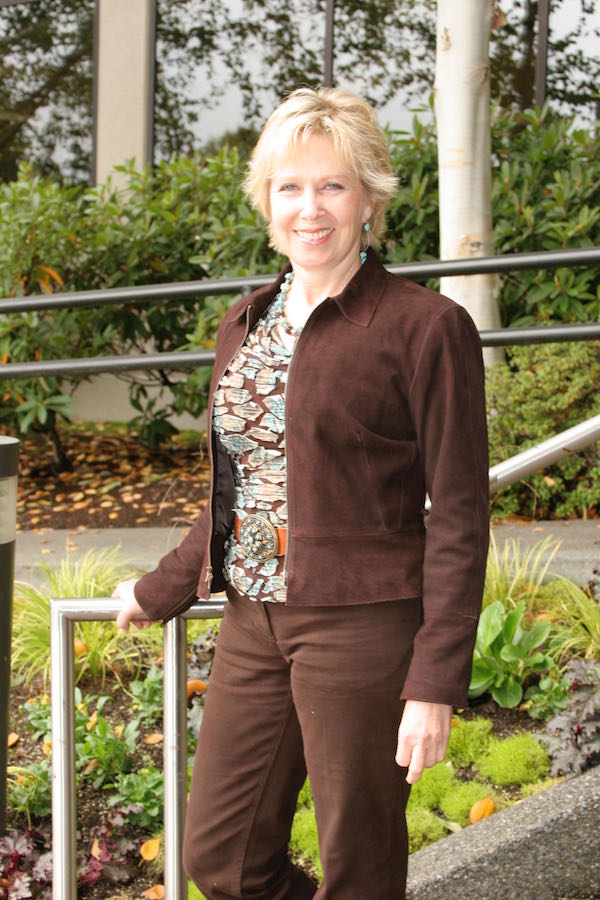
Adelia Ritchie grew up on a northern Virginia farm, with horses, cattle, dogs, and her pet pig Porky, who ran the whole show. A long-time resident of the great Pacific Northwest, Adelia is a serial entrepreneur, scientist, educator, and artist. She received a B.S. in Chemistry and Physics from the University of West Florida, and an M.S. and Ph.D. in Physical Organic Chemistry from Northwestern University. In June 2017, she completed the Climate Reality Leadership training program under the Hon. Al Gore, and currently works with educators, organizers and strategists to promote a deeper understanding of the science of climate change and its impacts on the complex ecological web of life. Adelia resides in Hansville, WA, with her garden, her dogs and a flock of very entertaining chickens.
Table of Contents, Issue #6, Winter 2019
Birds of Bufflehead Pond
by Adelia Ritchie, Winter 2019Painting by Adelia Ritchieby Adelia Ritchie, Winter 2019 Such big ideas we had when we first set out to inhabit Bufflehead Pond Farm! The place had not been properly tended for years and the local ecology (mostly blackberries and...
Purple Martins
by Gene Bullock, Winter 2019Photo by John F. WilliamsPhoto by John F. Williamsby Gene Bullock, Winter 2019 Native Americans learned long ago that if they hung hollow gourds around their villages, they could attract Martins to nest in them. The birds repaid them by...
Great Blue Heron
by Nancy Sefton, Winter 2019Photo by Philip HutchersonPhoto by Philip Hutchersonby Nancy Sefton, Winter 2019 As I floated in my kayak, I spotted a great blue heron perched on a mass of partially submerged roots. Suddenly it stabbed the water and came up with a small...
Poems-6
Winter 2019Winter 2019 Haiku by Nancy Rekow One heron standing.Mist hangs low in the valley.I will write to you.Painting by Kathleen Faulknerby Nancy TaylorIn Beacon Hill Park, Victoria B.C. I watch a bald eaglelight...
Citizen Science
by Todd Ramsey, Winter 2019Photo by Eric Wagner, COASST staffPhoto by Eric Wagner, COASST staffby Todd Ramsey, Winter 2019 It all started out so innocently. We just wanted to pick up trash on the beach after a storm. Soon after that we discovered COASST.org (Coastal...
Foto Tour 2
Showcase of Participant Photos North Kitsap Heritage Park from September 18, 2019 Showcase of Participant Photos North Kitsap Heritage Park from September 18, 2019 On September 18, 2019, WSU Extension in Kitsap County hosted a Forest Foto Expedition led by John F....
Should I Stay?
by Sharon Pegany, Winter 2019Artwork by Catherine WhalenArtwork by Catherine Whalenby Sharon Pegany, Winter 2019 turn of time rustle of feather echoing songs of beak and bill listen afresh to the voices among usWinter may be a quiet season in the Salish Sea region,...
Seabirds Are Cool
by Julia Parrish, Winter 2019Photo by Lee TenneboePhoto by Lee Tenneboeby Julia Parrish, Winter 2019 In Washington State, there is a bewildering abundance of seabirds. The seabirds of the surf zone that always capture my imagination are in the Alcid family: murres,...
The Russians Are Coming
by Paul Pegany, Winter 2019Photo by Catherine WhalenPhoto by Catherine Whalenby Paul Pegany, Winter 2019 The Russians are indeed coming! They are winged, white, and ready to spend their winter along the shores of the Salish Sea in northwest Washington. As the rain...
Editorial-6
by Adelia Ritchie, Winter 2019by Adelia Ritchie, Winter 2019 On vacation in Costa Rica recently, I walked the city of San José one morning and visited a famous museum of pre-Colombian civilization, back when indigenous tribes lived in harmony with nature and as a...
PLEASE HELP SUPPORT
SALISH MAGAZINE
DONATE
Salish Magazine contains no advertising and is free. Your donation is one big way you can help us inspire people with stories about things that they can see outdoors in our Salish Sea region.
We also don't advertise Salish Magazine, so please spread the word of this online resource to your friends and colleagues.
Thanks so much for your interest and your support.
We also don't advertise Salish Magazine, so please spread the word of this online resource to your friends and colleagues.
Thanks so much for your interest and your support.

